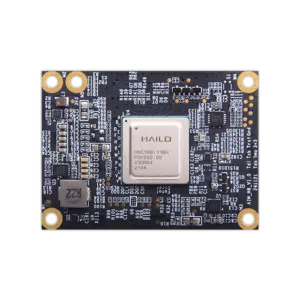Seamless AI Integration with Geniatech's M.2 and B2B AI Accelerator Options
Seamless AI Integration with Geniatech's M.2 and B2B AI Accelerator Options
Blog Article
Geniatech AI Accelerators: High-Performance, Low-Power Answers for Deep Learning
Synthetic intelligence (AI) is evolving at a rate that difficulties industries to embrace more efficient and effective solutions. One of the cornerstones of the growth are AI accelerator module made to handle complicated deep learning responsibilities without consuming excessive power. High-performance, low-power AI accelerators are paving the way for better technologies to infiltrate diverse industries, from healthcare and finance to automotive and edge computing.

The Need for High-Performance, Low-Power AI Answers
Deep learning versions are more powerful than actually, but additionally they demand substantial computational resources. Training and operating these designs require equipment that can process immense levels of information efficiently. However, conventional processors frequently are unsuccessful in conference the power effectiveness and speed required for real-time AI applications. That difference has resulted in a rise in need for AI accelerators that ensure good performance while being energy-conscious.
For industries counting on effective AI deployment, these accelerators symbolize a vital solution. Units and methods featuring these parts may deliver fast insights without wearing energy reserves, enabling smooth integration in to resource-constrained environments. This change toward handling computational energy with energy effectiveness is operating deeper ownership across cloud, on-premises, and side computing infrastructures.
Essential Characteristics That Establish Modern AI Accelerators
Energy Effectiveness Without Compromising Power
Low-power consumption is really a trait that sets these accelerators apart. They let systems to work for longer periods, specially in portable or side purposes where power assets are limited. By optimizing power consumption, these accelerators are not only eco-friendly but in addition cost-effective for businesses.
Optimized for AI Workloads
Unlike traditional processors, AI accelerators are designed to generally meet the particular needs of deep understanding workloads. This includes projects like object recognition, language processing, and real-time analytics. A number of these accelerators function very parallel architectures, which permit simultaneous handling of data to perform jobs faster and with higher precision.
Scalability for Any Arrangement
Scalability is yet another standout feature of the solutions. Whether you're deploying AI types in enormous knowledge centers or integrating them in to small edge devices, these accelerators are created to handle different computational needs without reducing efficiency.
Compact Types for Diverse Purposes
Breakthroughs in chip design have produced AI accelerators lightweight without reducing their power. That opens pathways for integration into units across areas like healthcare (wearable devices), retail (smart kiosks), and automotive (self-driving vehicles). This flexibility drives usage across industries.
Real-World Applications Driving Use
Healthcare
From diagnosing disorders to controlling individual information, AI in healthcare involves robust computational power. AI accelerators help real-time data evaluation, permitting quicker and more exact diagnostics while conserving process energy.
Money
Examining deal information and detecting anomalies for scam detection is computationally intensive. AI accelerators encourage financial institutions to run strong understanding types faster, improving the rate and accuracy of these protection systems.
Intelligent Cities

For clever cities deploying AI for surveillance, traffic management, and power conservation, AI accelerators provide the required power and efficiency. Their capacity to operate on edge units guarantees real-time information handling for increased downtown management.
Autonomous Cars
Self-driving engineering is perhaps one of the very most demanding applications of deep learning. AI accelerators give you the computational horsepower had a need to method knowledge from cameras and sensors in real-time, ensuring cars make secure and reasonable decisions.
The Bottom Range
The shift toward high-performance, low-power alternatives symbolizes the ongoing future of heavy understanding advancements. These accelerators empower industries to push the limits of AI integration while ensuring power performance and functional scalability. Their flexibility across areas underscores their impact as both enablers of smarter technologies and drivers of cost-effective solutions.
By meeting the requirements of real-time analytics and side processing, these accelerators are changing the AI landscape, which makes it a reachable, sustainable, and transformational engineering for industries throughout the globe. If your focus is on effective AI deployment, low-power AI accelerators are an important aspect in this constant invention revolution. Report this page